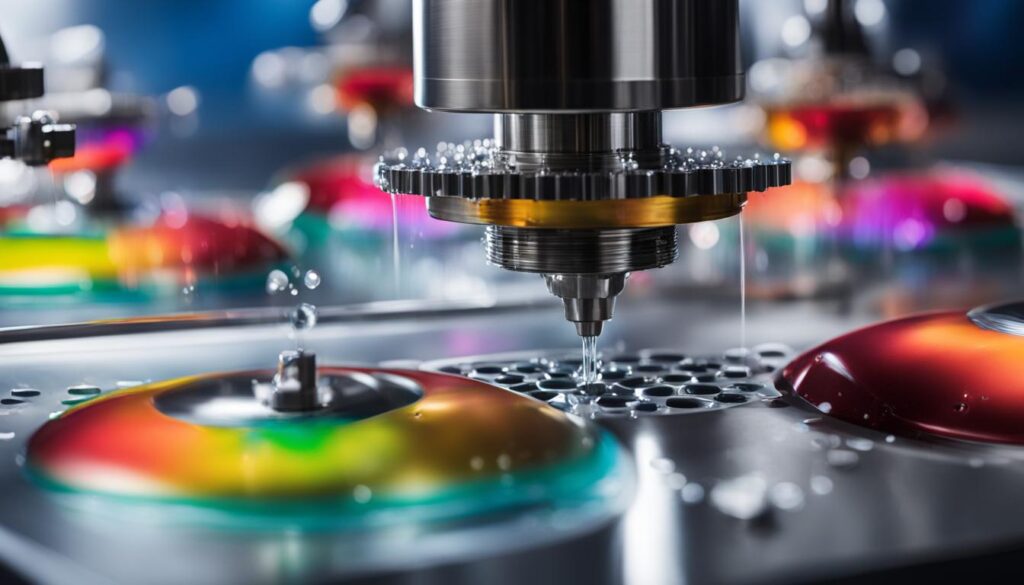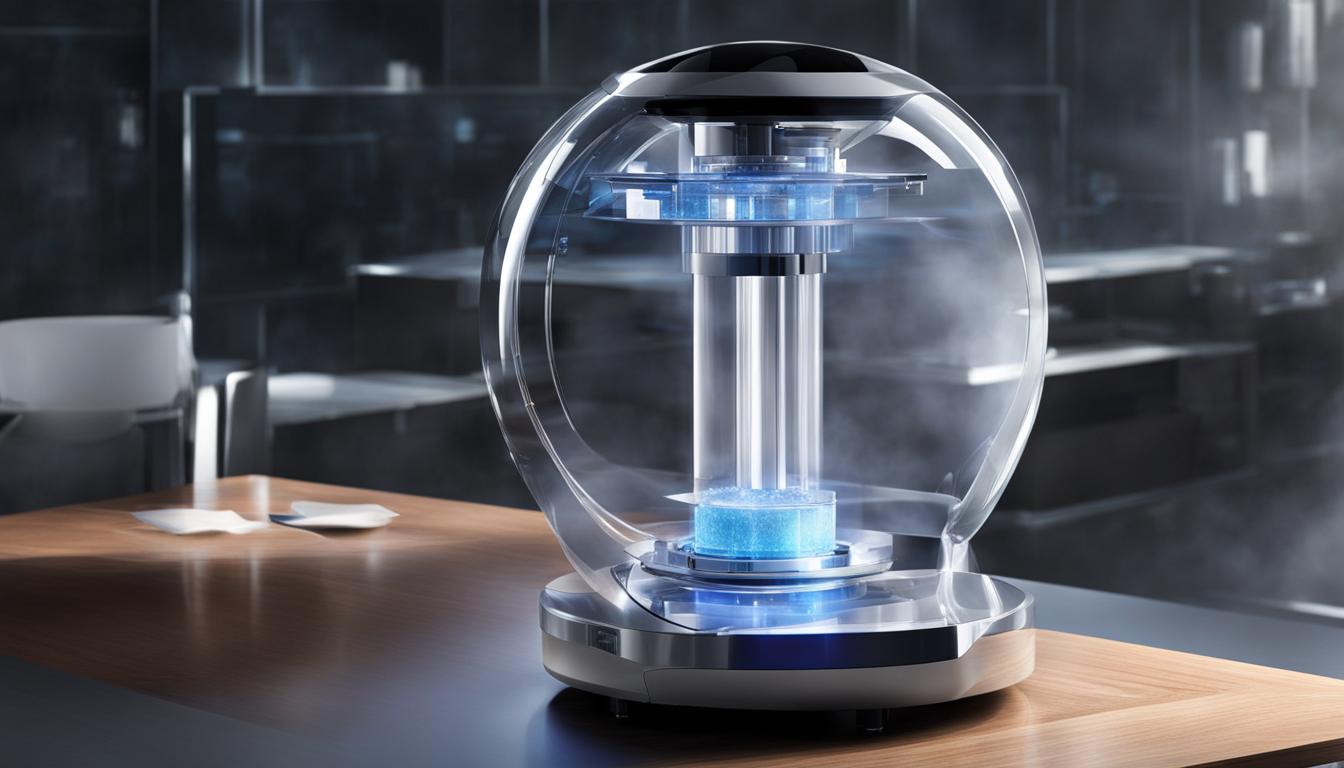Atomization technology has come a long way in recent years, bringing significant advancements to various industries. From spray systems to aerosol generation, the progress in atomization technology has revolutionized manufacturing, pharmaceuticals, agriculture, and automotive sectors.
Atomization technology involves breaking down liquids or molten substances into small droplets or particles, creating sprays or aerosols. These advancements have been driven by the constant need for more efficient and precise atomization processes.
With the help of breakthroughs in atomizer design and liquid atomization techniques, industries have been able to achieve enhanced atomization efficiency, spray uniformity, and improved outcomes. Atomizer technologies such as ultrasonic atomization and plasma atomization have provided precise control over droplet size, spray pattern, and spray distribution.
Key Takeaways:
- Atomization technology has witnessed significant advances in recent years.
- These advancements have benefited industries such as manufacturing, pharmaceuticals, agriculture, and automotive sectors.
- Atomization technology involves breaking down liquids or molten substances into small droplets or particles.
- New atomizer technologies provide precise control over atomization parameters.
- Breakthroughs in atomizer design have improved atomization efficiency and spray uniformity.
The Fundamentals of Atomization Technology
Atomization is a crucial process in various industries, including agriculture, automotive, coatings, and pharmaceuticals. It involves converting a liquid or molten substance into small droplets or particles for different purposes. Atomizers are the devices used to achieve atomization, and they consist of critical components such as nozzles and spray systems.
Defining Atomization and Its Importance in Industry
Atomization is the process of breaking down a liquid or molten substance into smaller droplets or particles. This technology plays a vital role in different industries by enabling efficient and precise spraying and aerosol generation. It is used in agriculture for pesticide and fertilizer application, in automotive manufacturing for paint spraying, in coatings for achieving smooth finishes, and in the pharmaceutical industry for drug delivery systems.
Critical Components of Atomizers: Nozzles and Spray Systems
Nozzles and spray systems are the critical components of atomizers that facilitate the atomization process. Nozzles are responsible for creating a fine and uniform spray pattern by controlling the flow rate and angle of the liquid. They play a crucial role in determining the size and distribution of the droplets or particles. Spray systems, on the other hand, regulate the overall atomization process by ensuring a consistent flow of the liquid and maintaining optimal pressure and airflow.
Comparing Traditional vs Advanced Atomizers
Traditional atomizers have simple designs and limited control over the atomization process. They rely on basic principles such as pressure differentials to achieve atomization. In contrast, advanced atomizers incorporate innovative features and technologies to enhance atomization efficiency and precision. They offer advanced control mechanisms, such as flow rate modulation and adjustable spray patterns, which result in improved spray coverage, reduced waste, and enhanced product quality.

Atomization in Different Industries
| Industry | Application | Benefits |
|---|---|---|
| Agriculture | Pesticide and fertilizer application | Efficient and even distribution, improved crop yield |
| Coatings | Surface coating and painting | Uniform and smooth finishes, enhanced product durability |
| Pharmaceuticals | Drug delivery systems and inhalers | Precise and controlled dosing, improved treatment effectiveness |
Conclusion
In conclusion, the advancements in atomization technology have truly transformed various industries by providing remarkable advancements in spraying and aerosol generation capabilities. As we look towards the future, the field of atomization technology holds immense potential for further growth and innovation.
Future Directions for Atomization Technology
Future advancements in atomization technology are expected to focus on refining atomizer design, enabling more precise control over atomization parameters, and developing new atomization techniques. These developments will pave the way for even greater efficiency, reduced waste, enhanced product quality, and the exploration of new applications.
How Advances in Atomization Technology Benefit Businesses
The benefits of atomization technology extend to businesses across various industries. By utilizing advanced atomization processes, businesses can optimize their operations, achieve higher levels of productivity, and effectively meet industry-specific requirements. Improved efficiency, reduced material usage, and enhanced control over atomization parameters result in cost savings and enhanced product quality. Additionally, the adoption of atomization technology facilitates the development of novel applications and opens up new business opportunities.
The widespread adoption of atomization technology across different industries is a testament to its significance and potential for future growth. By continuously pushing the boundaries of atomization technology, businesses can stay at the forefront of innovation and drive further advancements in industries such as manufacturing, pharmaceuticals, agriculture, and automotive.
FAQ
What is atomization technology?
Atomization technology refers to the process of breaking down a liquid or molten substance into small droplets or particles to create a spray or aerosol.
What industries benefit from atomization technology?
Atomization technology benefits various industries, including manufacturing, pharmaceuticals, agriculture, and automotive.
How does atomization work?
Atomization is the process of converting a liquid or molten substance into droplets or particles for various purposes.
What are atomizers?
Atomizers are devices used to achieve atomization, and they consist of critical components such as nozzles and spray systems.
What are the advancements in atomization technology?
Advancements in atomization technology include improved atomization efficiency, spray uniformity, and overall performance, as well as the development of new atomizer technologies such as ultrasonic atomization and plasma atomization.
How is atomization optimized for specific industries?
Atomization is optimized for specific industries by considering factors such as droplet size, spray pattern, and spray coverage, ensuring efficient and even distribution of substances in applications such as agriculture, coatings, and pharmaceuticals.
What is the future of atomization technology?
The future of atomization technology may involve further advancements in atomizer design, more precise control over atomization parameters, and the development of new atomization techniques.
How do advances in atomization technology benefit businesses?
Advances in atomization technology benefit businesses by improving efficiency, reducing waste, enhancing product quality, and enabling new applications.
























+ There are no comments
Add yours